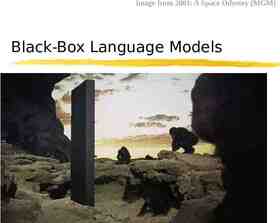Workshops for implementing the Strategic Plan for Biodiversity through
13 Slides1.01 MB

Workshops for implementing the Strategic Plan for Biodiversity through the National Biodiversity Strategies and Action Plans Module 2 The Biodiversity Planning Process: Updating National Biodiversity Strategies and Action Plans CBD Secretariat April 2011.

Guiding principles (based on decision IX/8) a) NBSAPs are key implementation tools of the Convention. They must address all three objectives of the Convention: b) The NBSAP should highlight, and seek to maintain the contribution of biodiversity and ecosystem services to human well being. c) The NBSAP is a strategic instrument for achieving concrete outcomes, and not a study. d) To be effective the NBSAP must be jointly developed, adopted, and owned by the full range of stakeholders involved. It is also important that high-level government support be secured. e) The NBSAP must include measures to mainstream biodiversity into sectoral and cross-sectoral policies and programs. f) Biodiversity planning is a long-term, cyclical and adaptive process. It will involve continual monitoring, evaluation, and revision, as progress is made, conditions evolve, and lessons are learned.

Steps in the Biodiversity Planning Process 1. Getting Organized 2. Assessment/ Country study 8. Updating or Revising 3. Developing a Strategy 7. Reporting 6. Monitoring & Evaluation 4. Developing a Plan of Action 5. Implementation

1. Getting Organized Identify stakeholders who should be involved and bring them together Important to ensure “buy-in” Results: A small representative group willing to form part of the NBSAP working group or committee A broad range of participants engaged in the larger process Motivated and active participants Brought additional stakeholders on board More information in module 5 (stakeholder engagement)

2. . Assessment of current conditions A brief assessment of why biodiversity is important for the country: Its contribution to human well-being Its economic and other values and the costs of its loss The drivers and underlying causes of its loss Review relevant laws and policies Lessons learned from the previous NBSAP Gaps and unmet needs Results: A reliable picture of what is already known about national biodiversity and the threats it faces Understanding of why biodiversity is important for the country. Understanding of legal and administrative frameworks and existing institutional and human capacities. A list of gaps and unmet needs Much of this information will already be available in the country’s fourth national

3. Developing the Strategy Statement of where the country wants to go and which route it will take to get there. Should include: Principles Values and beliefs underlying the NBSAP. Priorities National targets in support of the Strategic Plan More information on developing targets in module 4

4. Developing the Action Plan Vehicle for implementation – “How we are going to get to where we want to go”. Identifying the action that will be implemented Who does what? Where? When? How? Identifying and securing the human, technical and financial resources necessary Establishing indicators to measure and report on progress towards national targets and deciding on monitoring and evaluation mechanisms. More information on Decision IX/8, which provides guidance on NBSAP content and processes, is in module 1

5. Implementation Carrying out the agreed plan of action in the way envisaged, within the allocated time frame Implementation will occur on several fronts and by different actors simultaneously: Preparing, negotiating and adopting legislative and administrative measures (civil servants and politicians) Scientific and research activities (scientific community) Undertaking specific projects (national or international NGOs, or governments) Carrying out education and public awareness activities (educational institutions) Establishing an effective NBSAP management unit to have reliable and comprehensive overview of implementation

6. Monitoring and Evaluation Mechanisms for monitoring and evaluation need to be built into the plan of action, and in place at the start of implementation Important to identify appropriate baselines and indicators to evaluate outcomes and effectiveness Monitoring and evaluation is preferably done by a range of stakeholders or by independent bodies

7. Reporting Parties to the CBD are required to present National Reports to COP every four years on the measures they have taken to implement the Convention Preparing a national report can help to: Identify gaps in the NBSAP Identify issues which require special attention. Provide the basis for a proposed revision of the NBSAP. Countries may be obliged to prepare other reports on biodiversity policy or implementation of the CBD such as to Parliament or to national audit offices. The process of preparing the national report should be a fully participative national process, involving all the stakeholders More information on the fifth national reports is available from https://www.cbd.int/nr5/

Support from the GEF The Biodiversity Strategy for GEF-5 includes: "Integrate CBD Obligations into National Planning Processes through Enabling Activities” (5th objective) Up to US 500,000 per eligible country have been reserved for such Enabling Activities, outside of each country’s STAR allocations. Funds for NBSAPs and fifth national reports can be accessed through a number of ways: Direct access from the GEF Secretariat Access through an agency For LDCs and SIDS, through a UNEP Umbrella Project (currently under development) In all cases applications should be made through the GEF Operational Focal Points for the country concerned.

www.cbd.int/sp/sp www.cbd.int/nbsap







